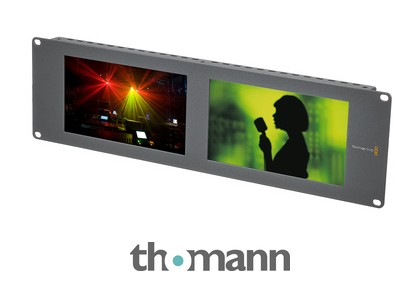

It's worth pointing out here that while the monitoring options affect the display on the back of the camera, the SDI output always reflects what's being recorded. The key factor is that there's another film-or-video selection option in the monitoring options, which allows the user to view either the uncorrected log image as it's recorded, or to view it via a lookup table which creates something approaching a viewable Rec.

#Blackmagic smartscope trouble shooting manual
As an adjunct to this, the camera does provide a 1:1 pixel mapping when the display is double-tapped, which is really nice, and a peaking-style focus-assist feature.Ĭolorimetry options are simple: “film” or “video”, which the manual indicates refer to log and Rec. Real cameramen laugh in the face of autofocus, of course, but it can be quite nice on run-and-gun documentaries. This wouldn't have been feasible on the passive micro-4/3 mount, though, so it's no great surprise that the feature isn't there. While we wouldn't expect a non-reflex camera like this to have conventional autofocus hardware, which resides inside the viewfinder on a DSLR, it's possible to imagine autofocus being implemented based on real-time image analysis, as is done in some DSLRs during live view operation. There is no auto focus, which would have been at least technically possible on the EF version with active lenses. The choice depends on what you own and what you intend to use and the availability of the flexible micro-4/3 mount is a very good thing. There isn't any electronic control available on the micro-4/3 version, which means that you can't get electronic iris control on EF mount lenses without a potentially-expensive active adapter. Personally, unless I already owned significant Canon glass, which tends to be less ideal for moving-picture work with its servo focus and lack of parfocality, I'd go for the micro-4/3 mount version which is adaptable to a wider variety of things. This is good if you're using Canon lenses as the iris control is then available with the “next” and “previous” buttons which normally form part of the camera's transport controls. Meanwhile, it's possible to pipe it into something like a Smartscope Duo and select an audio metering mode, and meter the SDI embedded audio, if you're in a position to do that. Blackmagic tell me it's one of their most requested features, so perhaps it'll appear in a future update. The only key feature that's actually missing is some form of audio metering, which is odd considering Blackmagic went to the lengths of providing the thing with the balanced audio inputs which are so conspicuously missing on competing DSLRs.

The user interface to the Cinema Camera is refreshingly simple. We'll talk about the pictures at the end, but even looking at it on the back of the camera, it's clear that the claim of 13 stops of dynamic range in film mode, which is a lot, is not unreasonable. It certainly feels solid if not rather front-heavy with anything but a small lens mounted. Handheld it's fine if a bit chunky, and chunky really means solidly-built, so that's probably OK too. While it's certainly possible to mount one on a set of rods and accessorise it for single-camera drama work, you'd probably prefer a separate viewfinder – something like a Cineroid – given the position of the monitor. HandlingĪs an ergonomic proposition, the Cinema Camera is clearly very much a documentary device, designed to work the same way as a video-capable DSLR. Its headline feature, in my view, is that it is probably one of the most cost-effective ways to get hold of a camera that will shoot in something other than standard video colorimetry – and has a very respectable 13-stop dynamic rangeīlackmagic generously supplied a camera for evaluation along with a SmartScope Duo and one of their HDMI to SDI mini-converters so that RedShark and I could monitor HDMI devices as well and use the same device in post-production. The Blackmagic Cinema Camera is an interesting device, particularly in light of our recent coverage of luminance and monitoring. Here's Phil Rhodes' take on this fascinating device, which is now available for $1,000 less than the original price

We were first with the Blackmagic Pocket Cinema Camera but until now we haven't reviewed the original Blackmagic Cinema Camera.


 0 kommentar(er)
0 kommentar(er)
